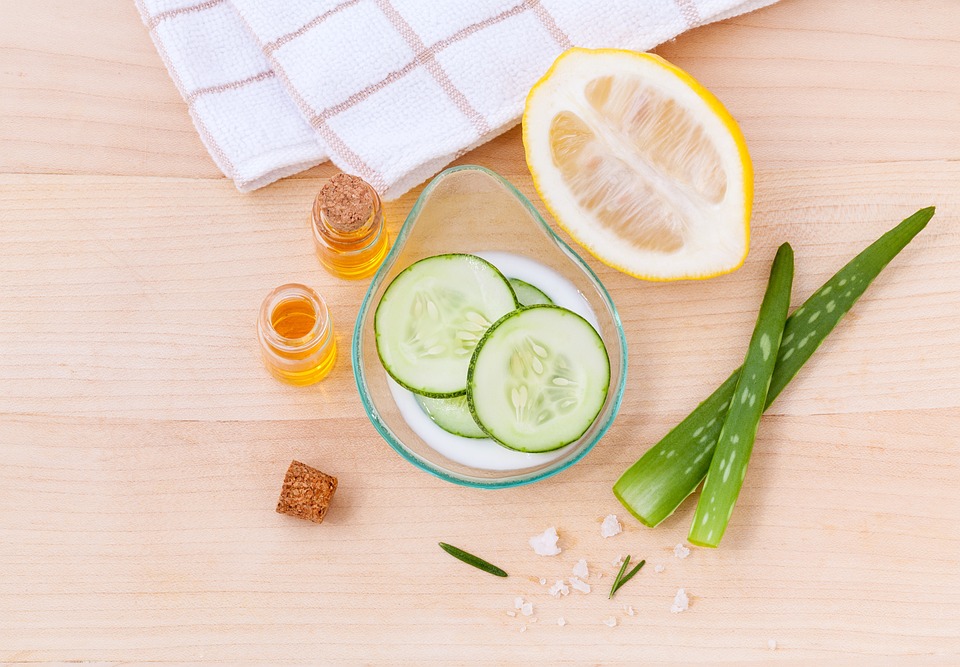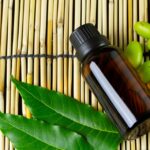We are all aware of the damaging effects of traditional cleaning products on the environment, yet using vinegar for cleaning is far from pleasant; this article will provide ways to keep a tidy and fragrant home without being harmful to the planet.
It is increasingly common and accepted for people to be mindful of the environment. It is evident that taking care of the Earth is seen as an important endeavor that has become an integral part of life, rather than an unusual thought that only some people pay attention to. We have taken charge and have put many initiatives in motion, such as banning plastic bags in multiple countries, people purchasing locally grown/sourced food, the increase of vegan and vegetarian diets, using energy in a more conservative way, preserving wild animals, conserving water sources, reusing items, and so much more; the demand for organic and environmental-friendly items is higher than ever.
In this discussion, we cover tips on how to be more eco-friendly in your own home. Additionally, we provide instructions on how to make organic, biodegradable cleaning solutions that will help keep your house spic and span while being mindful of the environment.
What is Green Cleaning?
Green cleaning is a general phrase to describe cleaning methods or products that are made with consideration of the environment. The aim of adopting green practices is to limit the release of contaminants into the environment, thus avoiding poisoning wildlife and people with poisonous compounds.
Eco cleaning items are intended to be environmentally friendly, healthy for animals, and beneficial for people.
Green cleaning products can be composed entirely of natural elements, and they may also be created through environmentally friendly processes to ensure they are non-hazardous and do not produce any toxins when being put to use. Products may receive fair trade certification if they adhere to specific labor and environmental guidelines and have labeling that denotes their low and/or lack of volatile organic compounds. This makes them more beneficial for people and the environment. More on this later.
Why is green cleaning important?
Using an environmentally friendly cleaner has more benefits than you may expect. Using less ozone-depleting materials and producing fewer air and water pollutants has a positive effect on climate change. A manufacturing system with a closed loop encourages reusing materials and thereby reduces the utilization of new, often hazardous chemicals and materials, as well as cutting down the need for specialized disposal of toxic waste.
Along with the positive effects on the environment, using green cleaning products also helps to make your home safer for everyone living there, be it humans or animals.
If you looked at the packaging of conventional cleaning supplies, you would likely come across warnings like ‘Inflammable’, ‘Poisonous’, and ‘Abrasive’ as well as directions to put on gloves, keep it away from your skin and eyes, and never ever breathe in the fumes… This plainly indicates that such items are not safe to use, even in small amounts.
It has been reported by the National Poison Control Center that household cleaning products are one of the top five causes of calls to the center – making the situation even worse. Many of the chemicals used in regular household cleaning agents are hazardous to your wellbeing, with some even known to be potential carcinogens or endocrine disruptors!
The Benefits of Switching to All Green Cleaning Products
Therefore, having a grasp on green cleaning and its significance, let’s discuss the true advantages of shifting to a strictly green cleaning method… And believe me when I express there are numerous benefits!
Health Benefits
Rough, chemical-filled, family cleaning products have a huge influence on our wellbeing. Although we are not eating it, with every spray, the toxins that we are breathing in or coming in contact with our skin are entering our bodies.
By selecting to utilize environmentally friendly cleaning items, you are …
- Reducing yourself and your loved ones’ exposure to harsh chemicals
- Eliminating leftover, toxic surface residue from traditional cleaners that can be easily absorbed by your skin
- Improving air quality in your home with fewer chemical gases in the air
- Reduce the risk of chemical burns to the skin or eyes (though even non-toxic cleaners can irritate the eyes and skin so be sure to test your products)
- Eco cleaners effectively reduce the amount of dust and chemical allergens in the environment, reducing respiratory issues like asthma and reducing common issues like headaches, and even sneezing!
We are regaining autonomy and making smart choices about the items we buy, now that we are well-informed about the components.
Environmental Benefits
If the health advantages of changing your cleaner weren’t motivating enough, the additional benefits for the environment will surely have you rethink your regular cleaner.
Its inconceivable for some that such a tiny bottle of liquid could influence our planet, but indeed it does. A relatively small amount of liquid can become countless tons of fluid when it is utilized on a larger scale.
You have the power to make a positive impact, no matter what anyone else may be doing. Taking steps to reduce your carbon footprint can give you a sense of satisfaction and pride.
- Minimize your impact on Ozone depletion as well as your impact on global climate change
- Reduce pollution from runoff into our water and soil (which then goes into the food chain)
- Reduces chemical pollution in our air
- Reuse containers with peace of mind that chemicals aren’t still inside, which results in less waste being sent to landfills
- Know that the cleaners you are using are biodegradable and eco-friendly
- You are helping preserve our wild animal populations and keeping harmful substances out of the ocean
Cleaning Products and Environmental Health
Once liquids have been eliminated from our drains, they are handled together with sewage and other wastewater at city treatment facilities, then released into close-by rivers. The majority of components in chemical solutions are decomposed into harmless elements during the processing process or shortly following it. However, some do not take these measures, which could endanger the water quality and the aquatic life. In May 2002, the U.S. conducted a research project looking at pollutants in river water samples from all over the country. The results of the Geological Survey indicated that 69% of the streams tested had residual byproducts of detergents present. Sixty-six percent contained disinfectants.
The United States Geological Survey (USGS) identified metabolites of detergents that are part of a group of compounds known as alkylphenol ethoxylates (APEs). Substances such as nonylphenol ethoxylates and octylphenol ethoxylates, collectively known as APEs, are surface active agents that are essential for the performance of detergent. Certain ingredients are incorporated in laundry detergent, disinfectant, laundry stain remover, and citrus cleaner/degreasers. When let out in sewage treatment facilities, nonylphenol ethoxylates and octylphenol ethoxylates degrade into nonylphenol and octylphenol which are far more dangerous and not quickly broken down in the soil and liquids.
What reason do we have to place something like that close to us or our houses?
For those of you who are looking to transition from using hazardous aerosol cans and solutions to create a more eco-friendly atmosphere in your own space, this is an excellent starting point. Be aware when buying these items that not all of the elements have to be detailed, so you must have a keen eye for certain signals to guarantee that what you have purchased is indeed as it claims to be. Examine the tags for any warning indicators or signs of danger, scrutinise closely if they assert to be an environment-friendly label and go for those that state “no solvents”, “no phosphates” or “sourced from plants” rather than just “eco-friendly” or “all-natural” as they may not actually be.
If a product is labeled as “organic,” you may only be purchasing something that has one organic element, such as a plant oil, rather than the entire product being organic. Go for options made from plants instead of petroleum and make sure the container you are using can be recycled.
For a great way to incorporate these products into your daily routine, we present some simple and cheap steps to switch up your cleaning process by making them yourself!
These following directions will let you craft natural, eco-friendly, and organic cleaning items that will make your abode sparkle and smell good! Moreover, you’ll get a rush of joy from making them all on your own. Why? Because they contain essential oils. If you have something else you would rather use, any of the following oils are great for cleaning: lime, lemon, wild orange, thyme, peppermint, lavender, eucalyptus, rosemary, tea tree, and cinnamon.
We suggest getting hold of glass dispensers for your homemade items for their low environmental effect and because essential oils can harm plastics.
Recipes for Eco Cleaning Products
Natural Cleaning Products
All that is required to keep a fresh, disinfected and tidy house is the following.
ALL-PURPOSE CLEANER:
- 2 cups white vinegar
- 2 cups water
- 1 teaspoon natural dish soap
- 30 drops lemon essential oil
- 20 drops tea tree essential oil
Mix all ingredients in a glass spray bottle. Shake to combine and before use. Apply an aerosol and wipe down the countertops, cupboards, basins, lavatories, and any other locations.
GLASS CLEANER:
- 3 cups distilled water
- 1/4 cup rubbing alcohol or vodka
- 1/4 cup vinegar
- 20 drops peppermint or spearmint essential oil
Combine all ingredients in a glass spray bottle. Give the container a good shake, and then use it to spray the mixture onto mirrors, windows, or stainless steel surfaces. Clean the surface with paper towels or an old newspaper in order to achieve a streak-free gleam.
DE-GREASING AGENT:
- 1 cup baking soda
- 1/4 cup natural liquid soap
- 10 drops lemon essential oil
- 10 drops lime essential oil
- 10 drops wild orange essential oil
Combine the components to produce a paste (if needed, add additional soap). Use a rag or sponge to put on the product and then rinse it off with fresh water.
DEEP CLEANER, DECALCIFYING AGENT:
- 1/2 cup baking soda
- 1/3 cup liquid dishwashing soap
- 1/4 cup hydrogen peroxide
- 30 drops eucalyptus essential oil
- 3/4 cup water
Mix together then squirt into toilet or calcified area. Scrub and let stand 20 minutes then rinse.
DAILY CLEANING SPRAY:
- 1.5 cups water
- 1 cup white vinegar
- 1/2 cup rubbing alcohol
- 1 teaspoon natural liquid dish soap
- 15 drops lime essential oil
- 15 drops tea tree essential oil
Combine in a quart-sized spray bottle. Apply this preventative spray to your shower door and walls every day after you finish using it, in order to help guard against buildup.
CARPET FRESHENER:
- 1 cup baking soda
- 30 drops lemon essential oil
Put together in a small vessel, and secure the lid tightly. Shake well and allow to sit for 6-8 hours. Spread carpet with a dusting of material and let it sit there overnight. Vacuum up the next morning.
SOFT FURNISHING & LINEN SPRAY
- 1/4 cup distilled water
- 3 tablespoons witch hazel or vodka
- 20 drops lavender essential oil
- 15 drops frankincense essential oil
Put the components of the small spritzer together, mix them vigorously, and spray it over all bedding, like bedsheets and pillow covers.
AIR FRESHENER:
- 3/4 cup water
- 2 tablespoons vodka, rubbing alcohol, or pure vanilla extract
- 10 drops lavender essential oil
- 5 drops chamomile essential oil
Combine in a glass spray bottle, shake to combine. Disperse an aerosol in the residence in order to get rid of any bad aromas or unpleasant aromas. Compose a combination of essential oils that will fit your desired atmosphere in each area.
This is a fantastic advancement in creating a sense that you are having a significant influence on the planet; the fewer chemicals found in large-scale, mass-produced commodities, the more beneficial it is.
How do you tell if a cleaning product is green?
If you wish for your cleaning practices to become more environmentally friendly, but don’t have the option to make your own cleaning solutions, the best way to identify green cleaning products is to research companies that value environmental consciousness.
Certain enterprises can promote a green ideology by utilizing recycled materials for packaging and donating to ecological causes, yet their merchandise may still be made up of hazardous chemicals. Here enters the greenwashing we talked about earlier!
When looking for certification, make sure it is stamped with the EcoLogo, since that is the sole Canadian certification for environmentally friendly products. Organizations like Net Zero, AspenClean, and Attitude Living (enter the promo code CANDICEB) make natural and chemical-free cleaning supplies with elements taken from nature (like coconut remedies and essential oils) that help keep your living space fresh and sanitized, and none of the bad chemicals!



